Kingdom Animalia Subphylum Vertebrata Suborder Serpentes Scientific name Pseudechis australis Rank Species | Phylum Chordata Order Squamata Family Elapidae Higher classification Pseudechis | |
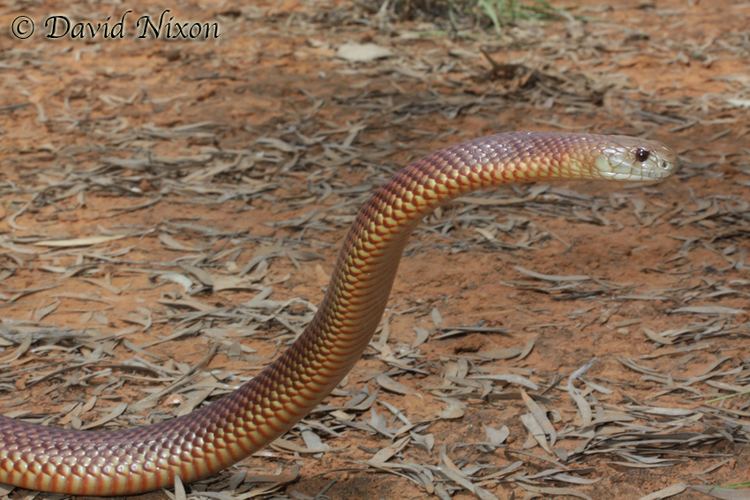 | ||
Similar Snake, Pseudechis, Eastern brown sn, Pseudonaja, Reptile | ||
King brown or mulga snake pseudechis australis
Pseudechis australis, commonly known as the king brown snake or mulga snake, or Pilbara cobra, is a species of venomous snake found in Australia. It is one of the longest venomous snakes in the world, the largest in Australia and is the second longest in Australia (surpassed only by the coastal taipan). Despite one of its common names, "king brown", it is a species in the genus Pseudechis, known as the black snake genus.
Contents
- King brown or mulga snake pseudechis australis
- Taxonomy
- Description
- Venom
- Distribution and habitat
- Reproduction
- Diet
- References
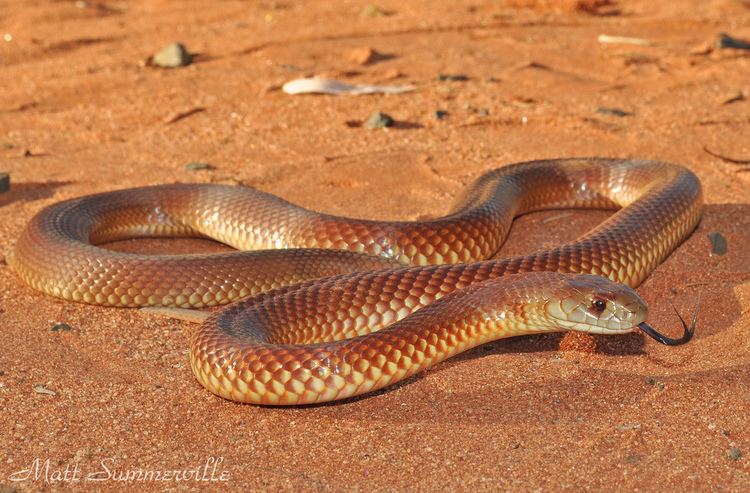
Taxonomy
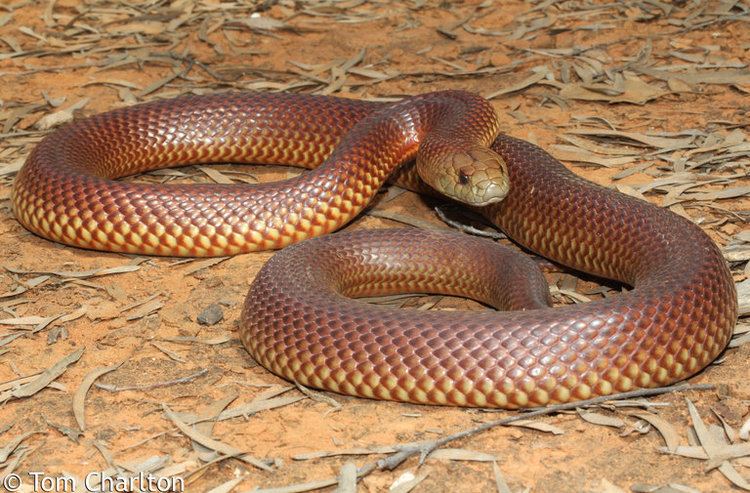
The species was first described by John Edward Gray in 1842, who placed it in the genus Naja (cobras). The species was long regarded as monotypic, but several new taxa have recently been described from within P. australis. Two new species and a new genus have been described within this complex by Raymond Hoser: Pailsus pailsei, from near Mount Isa, Queensland, Australia and Pailsus rossignolii, found in Irian Jaya. Hoser later also resurrected Pailsus weigeli (originally described as Cannia weigeli by Wells and Wellington 1987). These descriptions were initially received with skepticism due to the low level of evidence provided in the original descriptions. Later genetic analyses supported the validity of some of Hoser's species, but his genus Pailsus was shown to be a synonym of Pseudechis, and more work is needed to understand species limits among the smaller species of the group. The most recent published study suggested the existence of four smaller species associated with P. australis from northern Australia and New Guinea.
Description
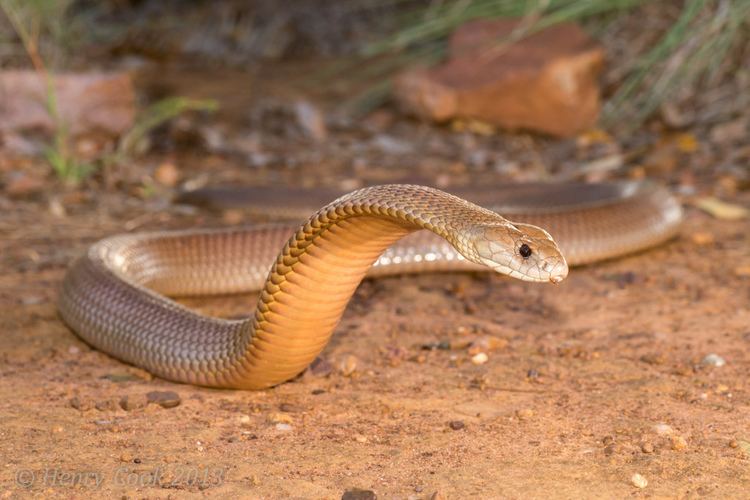
Mulga snakes are large, venomous snakes growing up to 2.5 to 3.0 m (8.2 to 9.8 ft) in length in the largest specimens, although 1.5 m (4.9 ft) is a more typical length for an average adult. It is exceeded in length among venomous snakes only by the Asiatic king cobra, some species of African mambas, genus Lachesis (bushmasters) of the American neotropics, and the Australian taipan. A good-sized adult mulga snake of 2 to 2.5 m (6.6 to 8.2 ft) length can weigh 3 to 6 kg (6.6 to 13.2 lb) and mulga snakes are often heavier than the co-occurring taipans. The colour of the snakes differs from area to area within their range; mulga snakes can be a light brown colour in the desert to a dark, brown-blackish colour in the cooler regions of Queensland, South Australia and New South Wales. Mulga snakes are robust, with a wide head and smooth snout.
Venom
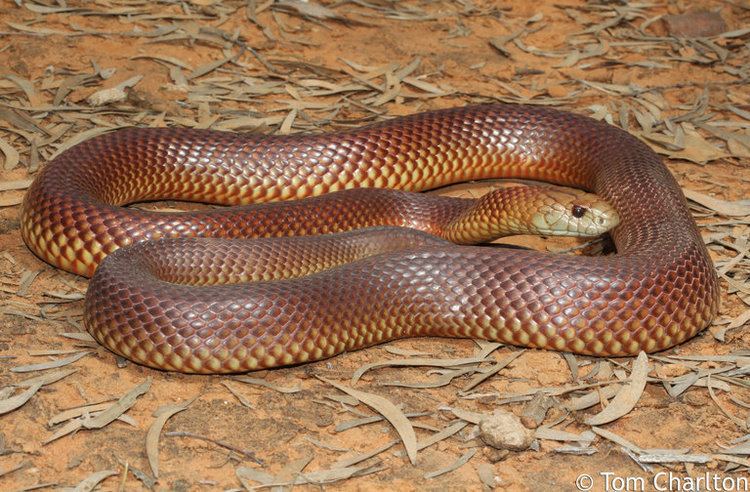
The mulga snake venom consists of myotoxins. The LD50 is 2.38 mg/kg subcutaneous. Its venom is not particularly toxic to mice, but it is produced in huge quantities. The average tiger snake produces around 10–40 mg when milked. By comparison, a large king brown snake may deliver 150 mg in one bite.
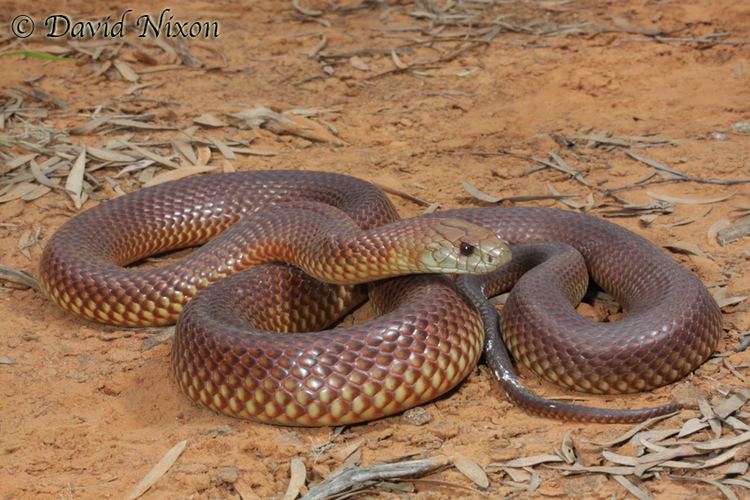
Black snake antivenin is used to treat bites from this species, after a CSL venom detection kit has returned a conclusive result for mulga snake envenomation, and there are signs that antivenin use is required.
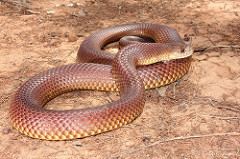
Venomous snakes normally only attack humans when disturbed. Mulga snakes have, however, been noted to bite people who were asleep at the time.
Distribution and habitat
Mulga snakes occur in most states of Australia except for Victoria and Tasmania. Its range includes all of the Northern Territory, most parts of Western Australia, Queensland, New South Wales and South Australia. It may also be found in the western parts of the Australian Capital Territory.
Mulga snakes inhabit woodlands, hummock grasslands, chenopod scrublands and almost bare gibber or sandy deserts, usually sheltering near humans under timber, rubbish piles, burrows and deep soil cracks. They are not found in rainforests.
Reproduction
Female mulga snakes produce a clutch of around 8–20 eggs, which may be laid in a disused burrow or beneath a log or rock. There is no maternal care for the eggs once they have been laid. Eggs take about 2–3 months to hatch, after which time the newly hatched snakes must care for themselves.
Diet
The mulga snake primarily preys on lizards, birds, small mammals and frogs. It is well adapted to eating other snakes, including all venomous snakes.
